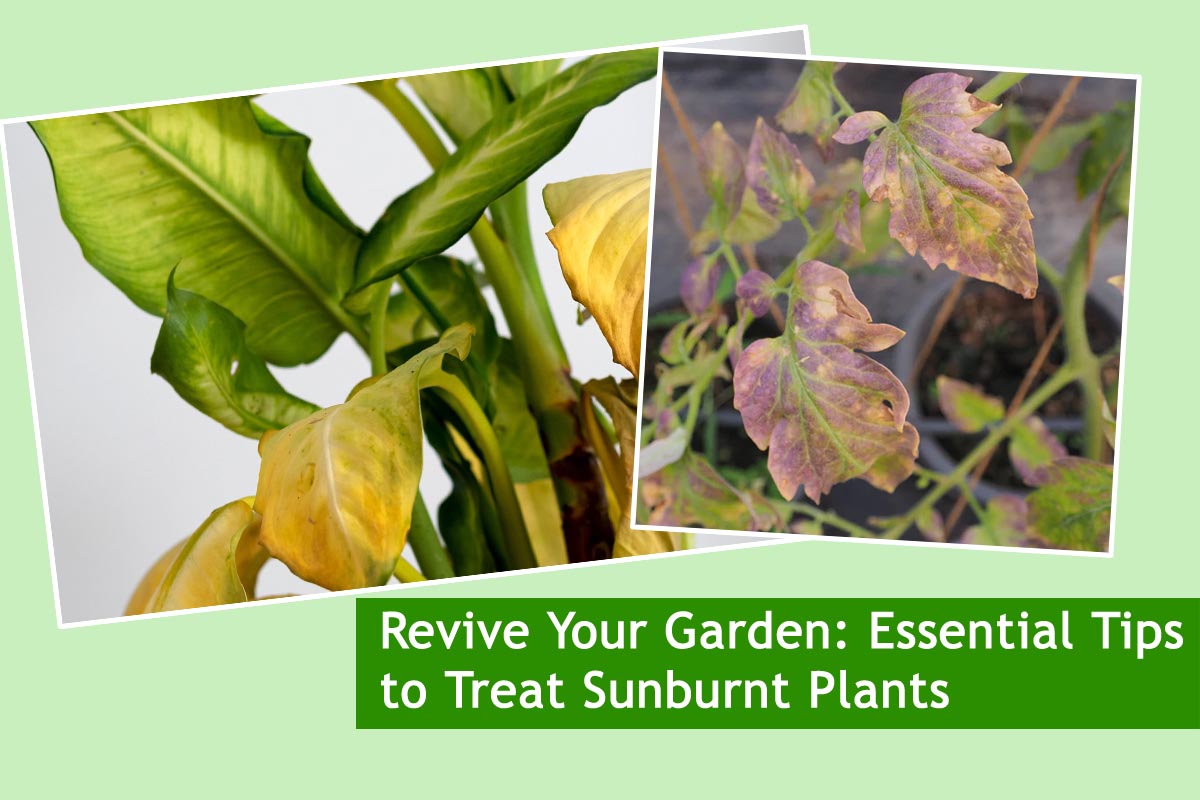
Revive Your Garden: Essential Tips to Treat Sunburnt Plants
A lush, vibrant garden is a source of joy for any green thumb enthusiast. However, even the most meticulously cared-for garden can fall victim to the scorching effects of the sun. Sunburnt plants are a common sight, especially during the peak of summer, when the sun’s rays are at their strongest. Fortunately, with a little knowledge and proactive care, you can revive your sunburnt plants and restore them to their former glory. In this guide, we’ll explore essential tips to help your garden recover from sun damage and thrive once again.
Understanding Sunburn in Plants
Before delving into treatment methods, it’s crucial to understand how sunburn affects plants. Sunburn occurs when plants are exposed to excessive sunlight, leading to damage of their leaves, stems, and even roots. The symptoms of sunburn vary depending on the plant species and severity of exposure but commonly include wilting, yellowing or browning of leaves, and overall decline in health.
Prevention is Key
Prevention is always better than cure, and this holds true for sunburnt plants as well. To minimize the risk of sun damage, consider the following preventive measures:
Choose the Right Location:
When planting your garden, select a location that offers a balance of sunlight and shade, especially for plants that are sensitive to intense sunlight.
Provide Adequate Water:
Proper hydration is essential for plant health, particularly during hot, sunny days. Ensure that your plants receive sufficient water to prevent dehydration and mitigate the effects of sunburn.
Also Read This : Common Mistakes to Avoid When Planting and Caring for Plants
Mulch Your Garden Beds:
Mulching helps retain soil moisture and regulate soil temperature, providing a protective barrier for plant roots against excessive heat.
Use Shade Cloth or Row Covers:
For particularly sensitive plants, such as seedlings or young transplants, consider using shade cloth or row covers to filter sunlight and reduce intensity.
Identifying Sunburn Damage
Despite your best efforts, some plants may still experience sunburn. It’s essential to recognize the signs of sun damage early to intervene effectively. Keep an eye out for the following symptoms:
Leaf Discoloration: Yellowing, browning, or bleaching of leaves are common indicators of sunburn.
Wilting: Sunburnt plants may exhibit wilting, even if the soil is adequately moist.
Also Read This : Enhancing Soil: A Guide to Making it Light and Loamy
Stunted Growth: Excessive sun exposure can hinder a plant’s growth and development, leading to stunted or distorted foliage.
Increased Vulnerability to Pests and Diseases: Sunburnt plants are weakened and more susceptible to pest infestations and diseases.

Also Read This : Cultivate Your Own Onion Plant in a Water Bottle with This Step-by-Step Guide!
Reviving Sunburnt Plants
If you notice signs of sunburn in your plants, don’t despair. With proper care and attention, you can help them recover. Here are some essential tips:
Provide Shade:
Move potted plants to a shaded area or erect temporary shade structures to shield them from direct sunlight until they recover.
Water Wisely:
Ensure that sunburnt plants receive adequate water, but avoid overwatering, as waterlogged soil can exacerbate root damage. Use a soaker hose or drip irrigation to deliver water directly to the root zone.
Also Read This : Unlocking Coriander’s Summer Secret: Essential Tips for Thriving Growth
Trim Damaged Foliage:
Prune away sunburnt leaves and stems using clean, sharp pruners. Removing damaged foliage encourages new growth and prevents further stress on the plant.
Apply a Protective Barrier:
Consider applying a natural sunscreen or anti-transpirant spray to the leaves of sunburnt plants. These products form a protective coating that helps reduce moisture loss and reflect excess sunlight.
Fertilize Sparingly:
Avoid applying fertilizer to sunburnt plants until they show signs of recovery. Once new growth appears, apply a balanced fertilizer to support healthy development.
Monitor for Pests and Diseases:
Keep a close eye on sunburnt plants for signs of pest infestations or disease outbreaks. Promptly address any issues to prevent further damage.
Also Read This : Transform Your Home into a Fragrant Oasis: Must-Plant Summer Flowers for April
Patience is Key
It’s important to remember that plant recovery takes time. Be patient and continue providing care and support to your sunburnt plants. With diligence and proper treatment, most plants will bounce back and thrive once again.
Sunburnt plants can be a setback in any garden, but with the right knowledge and care, you can help them recover and flourish. By understanding the causes of sunburn, implementing preventive measures, and providing appropriate treatment, you can revive your garden and enjoy its beauty for seasons to come. Remember to be vigilant, patient, and proactive in caring for your plants, and they will reward you with lush foliage and vibrant blooms.
Also Read This : Summer Soil Success: Your Essential Guide to Preparing the Perfect Planting Ground




